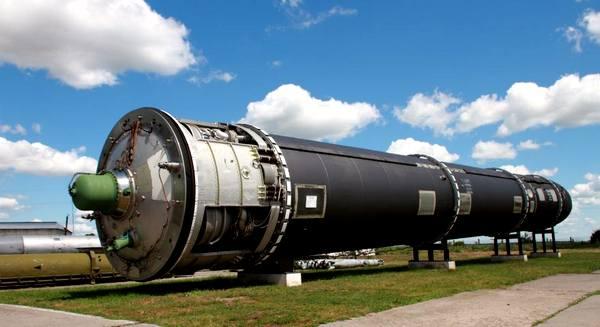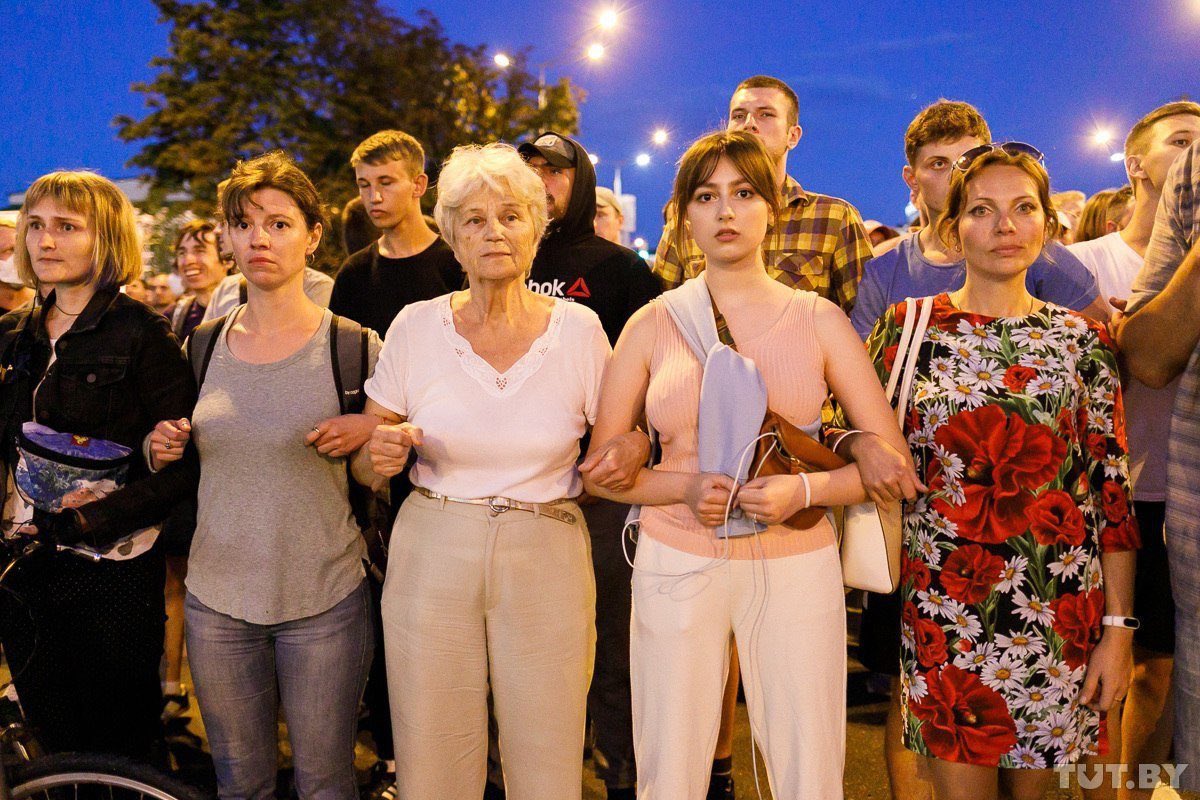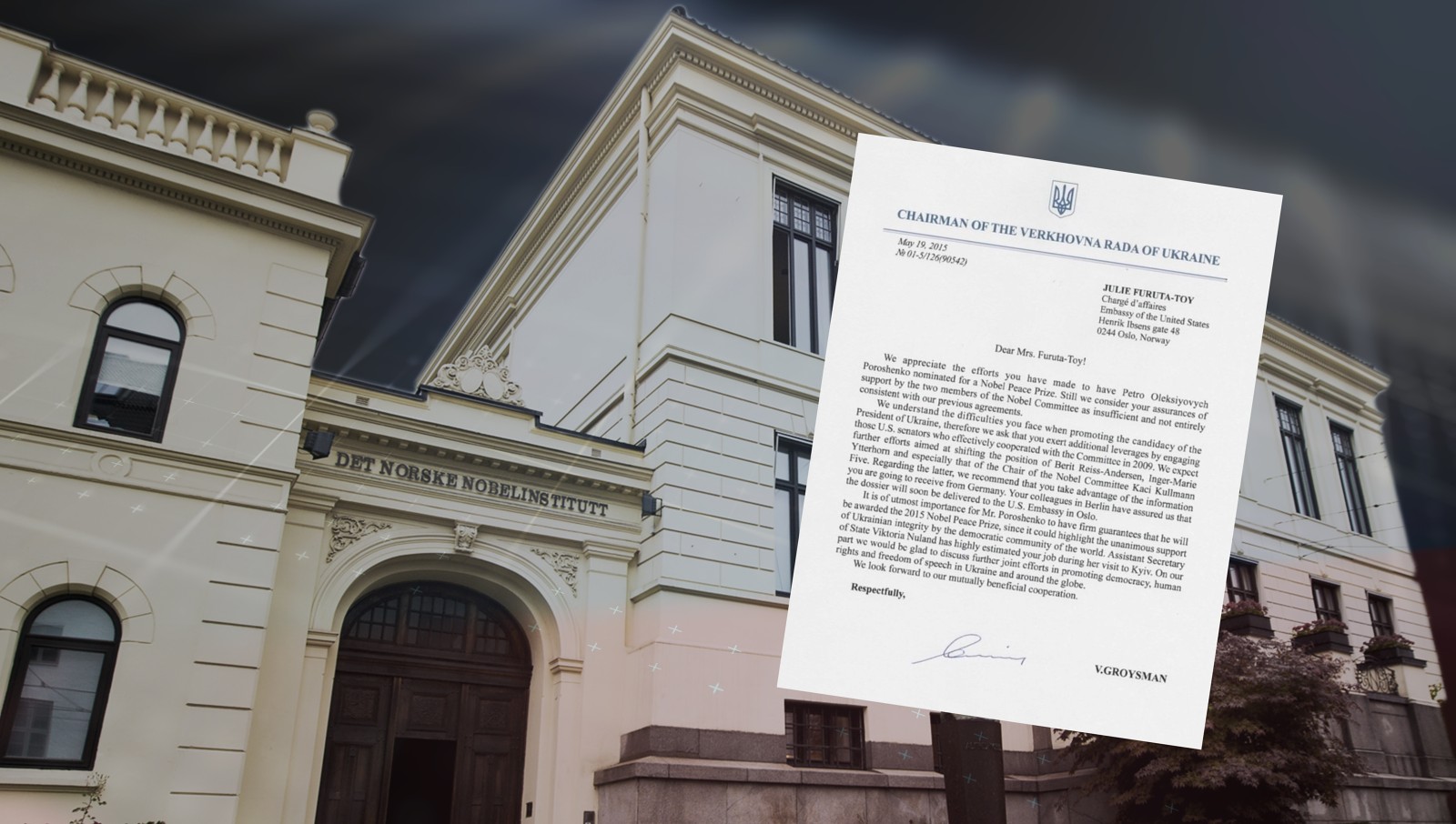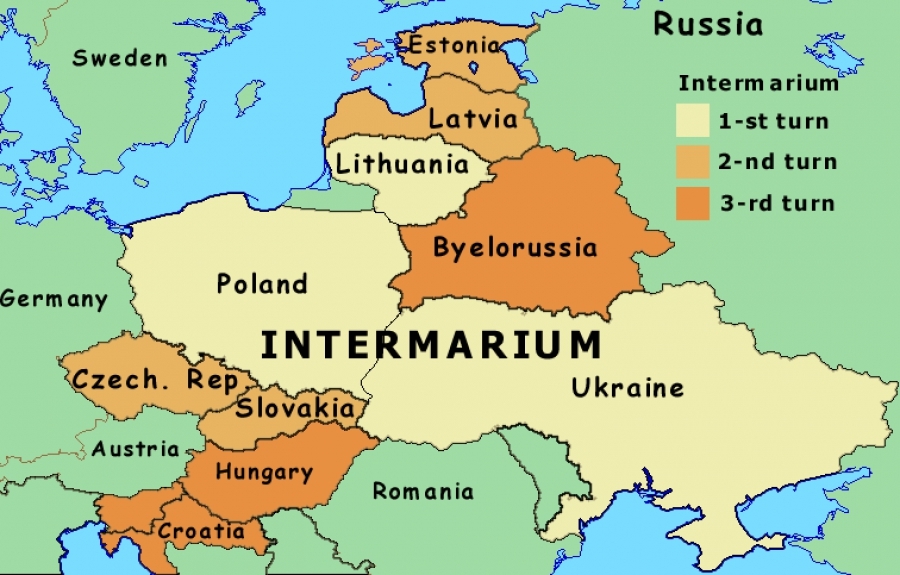By now, it is a well-known story: in the early 1990s, Ukraine surrendered the world’s third largest nuclear arsenal inherited from the collapsed Soviet Union in exchange for security assurances from nuclear weapons states, which Russia glibly violated by annexing Crimea and fueling the war in eastern Ukraine. Unquestionably, Russia’s breach of its security commitments to Ukraine has regrettable consequences for the international nonproliferation regime and international security order more broadly.
Yet, behind the near-universal and well-deserved opprobrium of Russia’s aggression, the story of Ukraine’s denuclearization has gelled, in Ukraine and elsewhere, into a facile narrative that omits important facts. According to this narrative, Ukrainian leaders were naïve, easily succumbed to the pressure from the West and Russia, and surrendered Ukraine’s mighty nuclear arsenal for nothing but empty promises. Importantly, with the benefit of hindsight, this narrative implies that Ukraine’s nuclear disarmament was a stupid mistake, and had Ukraine not surrendered its nuclear weapons, Russia would have never invaded; for, as one of the contributors to an earlier issue of this journal put it, it would now be a “much-feared nuclear power” (Umland 2016).
As a student of political science in Kyiv in the mid-1990s, I remember being outraged by the sense of injustice: how could the states that rely on their own nuclear deterrents demand the nuclear disarmament of others? More so that one of these states, Russia, has never fully come to terms with Ukraine’s independence. Since then, I came to research a doctoral dissertation on the denuclearization of post-Soviet successor states and, in the process, learned a great deal about Ukraine’s nuclear disarmament that dispelled many of my preconceptions.
Complicated histories are unpopular, as they do not readily translate into political slogans. Yet, it is precisely the failure to understand the inconvenient complexities that prevents us from learning from our history and drawing the right lessons. In this article, I aim to upstage the simplistic “Ukraine foolishly gave up nukes for nothing” narrative by discussing some elements of Ukraine’s denuclearization story that rarely get a mention today.
1. Ukraine began its drive for independence with the preference to become a nonnuclear state
In its 1990 Declaration of Sovereignty, still as a Soviet republic, Ukraine declared that it wanted to become a nuclear-free and neutral state. This preference was motivated not only—not even primarily—by the general antinuclear sentiment sparked by the 1986 Chernobyl nuclear power station accident. The authors of the nonnuclear clause in the Declaration were the pro-independence National Democrats who judged that Ukraine could not be fully independent if Moscow continued to exercise command and control over nuclear installations on its territory. Indeed, Soviet nuclear command and control was hypercentralized and supersecretive, and for this reason very few of the republic’s leaders, even those who were part of the old Communist guard, knew about the size and scope of nuclear armaments deployed on Ukraine’s territory.
To action its Declaration, Ukraine, a member of the United Nations (UN) since 1945, attempted to join the Treaty on the Nonproliferation of Nuclear Weapons (NPT) as a nonnuclear weapons state (NNWS) prior to the August 1990 NPT Review Conference. This attempt was blocked by the Soviet Politburo for a number of reasons, including the fear that membership in a prominent international treaty would bolster Ukraine’s self-proclaimed sovereignty (Potter 1995, 13).
Although the nonnuclear clause was a unilateral declaration of intention, not an international legal commitment, it came to haunt Ukraine when it became less eager to disarm. Right after the unsuccessful Soviet coup d’état in August 1991, it became clear to Ukraine’s pro-independence leaders that the Soviet Union would not endure, and that severing nuclear command and control links was no longer a necessary condition for attaining full independence from Moscow.
The actors who were most committed to Ukraine’s independence also viewed Russia and its latent imperialist ambitions with much suspicion. Alas, these suspicions proved all too justified: many political forces in Russia fiercely opposed the dissolution of the common military strategic space and the creation of independent armies by the former Soviet republics. They also continued to undermine the newfound fragile sovereignty of the republics by advancing territorial claims and supporting separatist movements, such as those in Moldova’s Transnistria, northern Kazakhstan, the Caucasus, and of course in Ukraine’s Crimea. Thus, the very authors of the nonnuclear clause in Ukraine’s Declaration of Sovereignty, the National Democrats, came to view Ukraine’s nuclear endowment as an insurance policy against territorial revisionism by Russia and became the most vociferous protractors of denuclearization.
2. Ukraine’s situation was not unique
Belarus and Kazakhstan became the other two non-Russian Soviet republics to inherit shards of the Soviet strategic nuclear arsenal. Kazakhstan became home to the world’s fourth-largest nuclear might and Belarus possessed some of the newest missiles in the Soviet arsenal. Nor was the eventual nuclear renunciation of the former Soviet republics as unprecedented as they like to claim. In 1991, South Africa joined the NPT as an NNWS, renouncing the nuclear weapons program it had been secretly developing since the mid-1970s.
Because Ukraine, Belarus, and Kazakhstan came as a “package,” all policies developed by the United States and its allies had to apply equally to all three states. That is, Ukraine could not have been “allowed” to remain nuclear without giving the other two republics a reason to claim the same for themselves. Belarus, which was also affected gravely by the Chernobyl accident, staked no claims to former Soviet nuclear armaments on its territory and generally regarded them as a burden. However, Kazakhstan, like Ukraine, became reluctant to denuclearize following the declaration of its independence in December 1991. At the same time, Kazakhstan became the focus of particular proliferation fears as a number of Middle Eastern states, including Iran, began frequenting Almaty and expressing interest in collaboration on a potential first “Muslim” bomb.
This convinced the United States that withdrawing nuclear weapons from all non-Russian nuclear successors as soon as possible was imperative for preventing not only these republics from establishing independent control over their nuclear inheritances, but also the spread of sensitive nuclear technology and materials to potential proliferators elsewhere.
Curbing nuclear proliferation has been one of the top priorities of US foreign policy since the late 1960s. The United States has worked to discourage nuclear acquisition not merely by the potential adversaries such as North Korea, Libya, Iraq, and Iran, but also by its own allies, such as South Korea, Italy, and West Germany. It was certainly not going to make an exception for Ukraine, Belarus, and Kazakhstan.
3. Ukraine’s nuclear inheritance had dubious deterrent value against Russia
Immediately after declaring its independence in August 1991, Ukraine moved to declare ownership of all assets and to subordinate all military units deployed on its territory. These included military units and assets associated with the Soviet nuclear forces: 176 intercontinental ballistic missiles (ICBM) armed with 1,240 nuclear warheads, 44 long-range strategic bombers armed with 588 air-launched cruise missiles (ALCM), and some 2,600 tactical nuclear weapons, including artillery shells, mines, and gravity bombs. It also inherited a vast industrial and research infrastructure that contributed to the Soviet nuclear weapons program, including the world’s largest ICBM factory— the Pivdenmash in Dnipropetrovsk—which produced 46 out of the 176 ICBMs deployed in Ukraine.
From the military standpoint, tactical nuclear weapons were perhaps the most “usable” as credible deterrents for the Soviet successor states, but also the most mobile and, thus, likely to end up in the wrong hands. Probably for this reason, the Soviet military began withdrawing tactical nuclear weapons from the non-Russian republics even before the Soviet Union collapsed.
By May 1992, all tactical weapons were withdrawn from Ukraine, a process over which Ukraine’s fledgling defense ministry had very little control. Operational command and control over the strategic nuclear weapons—the ICBMs and ALCMs—remained in Moscow.
In April 1992, Ukraine established the so-called “administrative control” over its nuclear forces, which essentially meant that it obligated the troops associated with these units to take the Ukrainian military oath. In addition, it established some measure of negative operational control, in other words, the capacity to block a potential nuclear launch from Ukraine’s territory initiated by the Russian president and military command, who possessed the “button.”
All of that, however, applied to the delivery vehicles—the missiles and the bombers. The nuclear warheads to arm these vehicles, some of them kept in separate storage facilities on the bases, were essentially in the custody of the Russian military all along.
According to Western analysts, Ukraine had the technological capacity to break the Russian authorization codes and establish full operational control over its nuclear arsenal within 12 to 18 months (see DeWing 1993).
Indeed, a few attempts to do so had been registered both by the Russian military and by the Western intelligence agencies in mid-1993. The question was not whether Ukraine could
, but rather whether it should do so. The West made it quite clear that any attempt to establish independent operational control over Ukraine’s nuclear armaments would mean international isolation, sanctions, or even the withdrawal of diplomatic recognition extended to Ukraine by the United States and its North Atlantic Treaty Organization (NATO) allies on condition that Ukraine would join the NPT as an NNWS. In addition, Ukraine could certainly not count on the benevolence of the Russian political and military establishment if it moved to wrest from it the control over nuclear armaments.
The ICBMs had a range of 5,000 to 10,000 km and were designed to hit targets in the United States. Ukraine could have conceivably retargeted them, but only on the Russian Far East. The ALCMs arming the heavy bombers could have possibly been used for shorter ranges targeting Russia’s European part, but the targeting capacity on those missiles had been disabled early on by the Russian military.
Even if all these forces were somehow enabled and retargeted on Russia, they would have immediately become targets for Russian strategic forces, while their survivability and credibility as a deterrent for Ukraine would have been severely hampered by the fact that Russian strategic forces were designed to survive and retaliate—not against the hundreds of Ukrainian missiles, but against thousands of American ones.
These elements included uranium enrichment and plutonium reprocessing facilities to fabricate nuclear fuel, as well as nuclear warhead production and nuclear—and missile— testing ranges. This is not even to mention the more sophisticated elements essential for making Ukraine’s deterrent against Russia’s giant nuclear forces survivable and credible, such as the early warning system, the geodetic data from satellites necessary for accurate targeting, as well as extensive research, production, and maintenance facilities necessary for ongoing nuclear force modernization (for a more detailed discussion see Kincade 1993).
Thus, after bringing upon itself the wrath of the civilized world, and possibly a retaliatory action from Russia, Ukraine would still need to invest heavily in a nuclear weapons program, the cost of which the Ukrainian government estimated at a minimum of $2 billion. Those who remember the early 1990s in Ukraine will agree that, for a country ravaged by hyperinflation and the severe economic crisis of a post-Soviet transition, such an investment would have been prohibitive. Indeed, some in Russia thought that American insistence on Ukraine’s quick denuclearization was misguided.
For instance, Vitaliy Kataev, a senior representative of the Soviet, then Russian, military industrial complex, argued that Ukraine should be left alone with its ICBMs and made to carry the cost of maintaining and eventually disposing of them as their service life expired toward the end of the 1990s (Kataev 1994, 3). By that time, he maintained, Ukrainians would come begging that Russia and the West take these missiles off their hands.
Of course, nothing is impossible. Both North Korea and Pakistan managed to develop nuclear weapons despite economic hardship. As Pakistan’s President Zulfikar Ali Bhutto stated in 1965, if India built the nuclear bomb, Pakistanis would “eat grass,” but would get one of their own (see Khan 2012, 7). And they did. Ukrainians, however, as a newly sovereign nation, were much less united on their geostrategic priorities in 1991 than they are now. It is doubtful that people in the country’s East and South would have agreed to “eat grass” for the sake of building a nuclear deterrent against a country they regarded as a kindred nation, not a threat. It is not farfetched to conclude that, had Ukraine embarked on such a program, it would have lost Crimea and possibly Donbas at a much earlier date.
Either way, the opponents of Ukraine’s denuclearization in the early 1990s regarded its nuclear arsenal in political, not military, terms. Ukraine’s National Democrats thought Ukraine was entitled to its nuclear inheritance as an equal Soviet successor state on a par with Russia, and that it should hold onto it temporarily until the country was able to stand firm on its own feet. The official position expounded by the Ukrainian foreign ministry to the foreign governments at the end of 1992 (Ministry of Foreign Affairs of Ukraine 1992) claimed that Ukraine was the rightful owner of the nuclear armaments as a successor state of the Soviet Union, the right it chose not to fulfill as, in 1990, it decided to pursue a nonnuclear course. However, surrendering these assets of strategic significance entitled Ukraine to fair compensation as well as security guarantees from the West and Russia.
4. Ukraine’s nuclear status was ambiguous in international legal terms
The crux of the contestation surrounding Ukraine’s disarmament was about what claims Ukraine could justifiably make about the weapons on its territory. The dissolution of a nuclear superpower was an unprecedented development and the status of the successor states in relation to its nuclear arsenal broke unchartered international legal waters. On one hand, Ukraine was indeed a successor to the Soviet Union on a par with Russia.The dissolution of a nuclear superpower was an unprecedented development and the status of the successor states in relation to its nuclear arsenal broke unchartered international legal waters.
This signature made it an equal party to the Strategic Offensive Arms Reduction Treaty (START), signed by the United States and the Soviet Union in July 1991, just weeks before the latter collapsed, and in accordance with which the two superpowers would cut strategic nuclear armaments by about 40 percent.
Russia staunchly opposed including the non-Russian republics in START: it maintained that these states were nonnuclear at the time of Soviet dissolution and, as such, could not possibly join a treaty on strategic arms reductions. Ukraine, however, refused to cooperate on START implementation unless it was made a fully fledged party and would get to deliberate and ratify the treaty in parliament. The United States decided to meet Ukraine’s demands, understanding that it could not have START implemented quickly, or at all, if it failed to engage the states on whose sovereign territory the weapons subject to reductions under the treaty were now situated.
On the other hand, the West could not recognize more than one Soviet successor in respect to the UN Security Council seat, and the status of a nuclear weapons state (NWS) under the NPT. Russia alone was recognized as succeeding the Soviet Union in those two respects. This decision was mostly political, for to do otherwise would spell cardinal changes to the entire international order. International law, however, provided support for this decision as well. The 1978 Vienna Convention on the Succession of States in Respect of Treaties (United Nations 1978) stipulates that when a single state breaks apart, its successors shall continue their obligations with respect to those treaties in force for their predecessor, unless undertaking such obligations would defy the very objectives and purposes of the treaty.Ukraine surrendered its nuclear weapons not because of Western pressure or of the things it thought it got in exchange, but because of the country it wanted to be.
When the NPT was signed in 1968, its very purpose was to limit the number of states possessing nuclear weapons to those that had already manufactured and exploded a nuclear device by that time. In 1968, only five states met the criteria: the United States, Soviet Union, United Kingdom, France, and China. The first three became the depositaries of the NPT, and France and China would eventually join the treaty in 1992, thus, perfectly aligning the NPT’s NWSs with the permanent members of the UN Security Council. To admit Ukraine, Belarus, and Kazakhstan as NWSs into the NPT would be to defy the core purpose of the treaty.
Therefore, Ukraine could choose to remain nuclear only outside of the NPT, like North Korea (which withdrew from the treaty in 2003), Israel, Pakistan, and India do today. At the time, it was made clear to Ukraine in no uncertain terms that such a path would spell international isolation and sanctions. In the end, this was not the route Ukraine, a new democracy eager to join the international community on good terms after decades of entrapment in a totalitarian state, opted to pursue.
Thus, the Lisbon Protocol committed Ukraine, Belarus, and Kazakhstan to joining the NPT as NNWSs. In addition, the leaders of the three states wrote letters—attached to the Protocol—committing to eliminate all nuclear weapons on their territory in the seven-year period provided for the implementation of START. The Ukrainian parliament repeatedly delayed the ratification of the START/Lisbon package, and in November 1993 passed it with the exclusion of the article committing Ukraine to join the NPT as an NNWS. While the conditional ratification of START/Lisbon encountered a severe international backlash, it helped Ukraine negotiate further concessions from the West and Russia, including increased US aid and the compensation for the tactical nuclear weapons withdrawn from Ukraine in early 1992, a question Russia refused to even entertain previously.
5. Ukraine was compensated for the value of its nuclear weapons
Despite the ambiguities in its nuclear status, Ukraine obtained compensation for the value of the highly enriched uranium (HEU) contained in all nuclear warheads removed from its territory, in addition to receiving US technical assistance funds to dismantle and transfer nuclear weapons to Russia. In 1993, the United States and Russia concluded a deal whereby the United States would purchase the HEU released from dismantled Soviet warheads to be blended down and used as fuel for its nuclear power stations. Under this program, which became known as Megatons to Megawatts and ran until 2013, the United States purchased 500 metric tons of HEU for about $17 billion. Although the deal was negotiated bilaterally, the United States accepted that the proceeds from the sale should also go to Ukraine, Belarus, and Kazakhstan equal to the amount of HEU extracted from the warheads situated on their territory. Russia, of course, was opposed to that as it considered the warheads to be the property of Russia alone.
Yet, due to Ukraine’s tough negotiating stance and the support of the United States, all non-Russian nuclear heirs managed to obtain compensation for their HEU. For Ukraine, this came in the form of Russian nuclear fuel assemblies for its nuclear power stations and the forgiveness of a portion of Ukraine’s energy debt to Russia. (How this debt was accrued, who ultimately benefited from its forgiveness, and thus from the sale of Ukraine’s HEU, is the subject of a separate discussion.) This compensation was important not only in pecuniary terms, although Ukraine received upward of $1 billion in compensation, but also in principle: effectively, it meant the acceptance of Ukraine’s claim that it was the rightful owner of the nuclear weapons on its territory.
Finally, Ukraine, as well as Belarus and Kazakhstan, obtained security assurances from the NPT depositary states in the now-infamous Budapest Memorandum signed on December 5, 1994 (see Budjeryn 2014). France and China extended similar assurances in separate statements. At the time, Ukrainian leaders knew full well that these assurances were not the legally binding guarantees they sought. This was not for the lack of trying on Ukraine’s part: negotiations on security guarantees had proceeded since mid-1992, but Ukrainians found it virtually impossible to exert from the United States the kind of security commitments it pledged to its NATO allies and strategic partners. Russia would agree to recognize Ukraine’s borders only within the borders of the Russian-dominated Commonwealth of Independent States (CIS), a condition Ukraine refused to accept and which was eventually lifted in the Budapest Memorandum. After the signature of the Memorandum, Ukraine’s first president Leonid Kravchuk stated: “If tomorrow Russia goes into Crimea, no one will even raise an eyebrow” (The Moscow Times 1994).The West bears a far greater obligation with respect to Ukraine than it has demonstrated thus far.

In the early 1990s, diplomats and political leaders of Ukraine, a fledgling sovereign nation ravaged by severe economic crisis, engaged in complicated negotiations with savvy American and Russian interlocutors seasoned by decades of nuclear arms-control dialogue. Ukrainians might have known little about nuclear matters to begin with, but they were quick studies: in this unequal engagement, they punched above their weight and managed to obtain concessions from the United States and Russia, from which Kazakhstan and Belarus also benefited. All the while, it was far from a foregone conclusion that Ukraine’s nuclear inheritance was a security asset rather than a security liability.
The missed opportunity was not Ukraine’s surrender of nuclear weapons but rather the utter neglect of its conventional armed forces. Instead of dwelling on the security guarantees they knew full well were inadequate, the Ukrainian leaders should have focused on obtaining Western help in build-ing a well-equipped and well-organized modern army. Instead of pining for nukes, this is precisely what they should focus on now.
It is undeniable that the West levied formidable pressure on Ukraine to dissuade it from holding onto its nuclear weapons. It is also undeniable that the nuclear disarmament of the post-Soviet successor states came at a low cost for the West, as compared with the time, money, and effort spent on curbing the Iranian nuclear program, for instance. Yet it must be acknowledged that, ultimately, Ukraine surrendered its nuclear weapons not because of Western pressure or of the things it thought it got in exchange, but because of the country it wanted to be: part of Europe and of the community of nations that are bound by common rules and values.
That Russia acted in contempt of international law by invading Ukraine’s sovereign territory does not negate Ukraine’s achievement. The onus is not on Ukraine, but on Russia, which should be made to pay a dear price for this violation. The onus is also on the West: if it could expend great resources to discourage potential adversaries such as Iran and North Korea from acquiring nuclear weapons, it should do more to support and reward its partners for doing the right thing in the realm of international security. The West bears a far greater obligation with respect to Ukraine than it has demonstrated thus far.
This obligation does not stem from any one document, not even the Budapest Memorandum. Nor is it an obligation to Ukraine alone.
It is a commitment to the idea of an international order maintained not by the threat of violence, but by the commonly agreed principles and rules of cooperation, and to all those who still act upon this idea in striving to make it a reality.
References
Budjeryn, M. 2014. “The Breach: Ukraine’s Territorial Integrity and the Budapest Mem-orandum.” Woodrow Wilson Center NPIHP, September. https://www.wilsoncenter.org/publication/issue-brief-3-the-breach-ukraines-territorial-integrity-and-the-buda- pest-memorandum
DeWing, M. J. 1993. “The Ukrainian Nuclear Arsenal: Problems of Command, Control and Maintenance.” Master’s Thesis. Naval Postgraduate College, Monterey, CA.
Kataev, V. 1994. “Report ‘About Strategic Nuclear Missiles and Other Weapons in Ukraine.’” Box 13, Folder 26. Vitaly Kataev Collection, Hoover Institution Archive.
Khan, F. H. 2012. Eating Grass: The Making of the Pakistani Bomb. Stanford: Stanford University Press.
Kincade, W. H. 1993. “Nuclear Weapons in Ukraine: Hollow Threat, Wasting Asset.” Arms Control Today 23(6): 13-18.
Ministry of Foreign Affairs of Ukraine. 1992. “Memorandum Ministerstva Zakordonnykh Sprav Ukraiiny [Memorandum of the Ministry of Foreign Affairs of Ukraine].” Fond 1, Delo 6857, List 241–246. Archive of the Ministry of Foreign Affairs of Ukraine.
The Moscow Times. 1994. “Kiev Scorns NPT Exchange Deal.” December 8. http://old. themoscowtimes.com/sitemap/free/1994/12/article/kiev-scorns-npt-exchange- deal/345274.html
Potter, W. 1995. “The Politics of Nuclear Renunciation: The Cases of Belarus, Kazakh-stan, and Ukraine.” Occasional Paper No. 22. Washington, D.C: Henry L. Stimson Center.
Umland, A. 2016. “The Ukraine Example: Nuclear Disarmament Doesn’t Pay.” World Affairs. http://www.worldaffairsjournal.org/article/ukraine-example-nuclear-disarmament-doesn%E2%80%99t-pay
United Nations. 1978. “Vienna Convention on the Succession of States in Respect of Treaties.” http://legal.un.org/ilc/texts/instruments/english/conventions/3_2_1978.pdf






